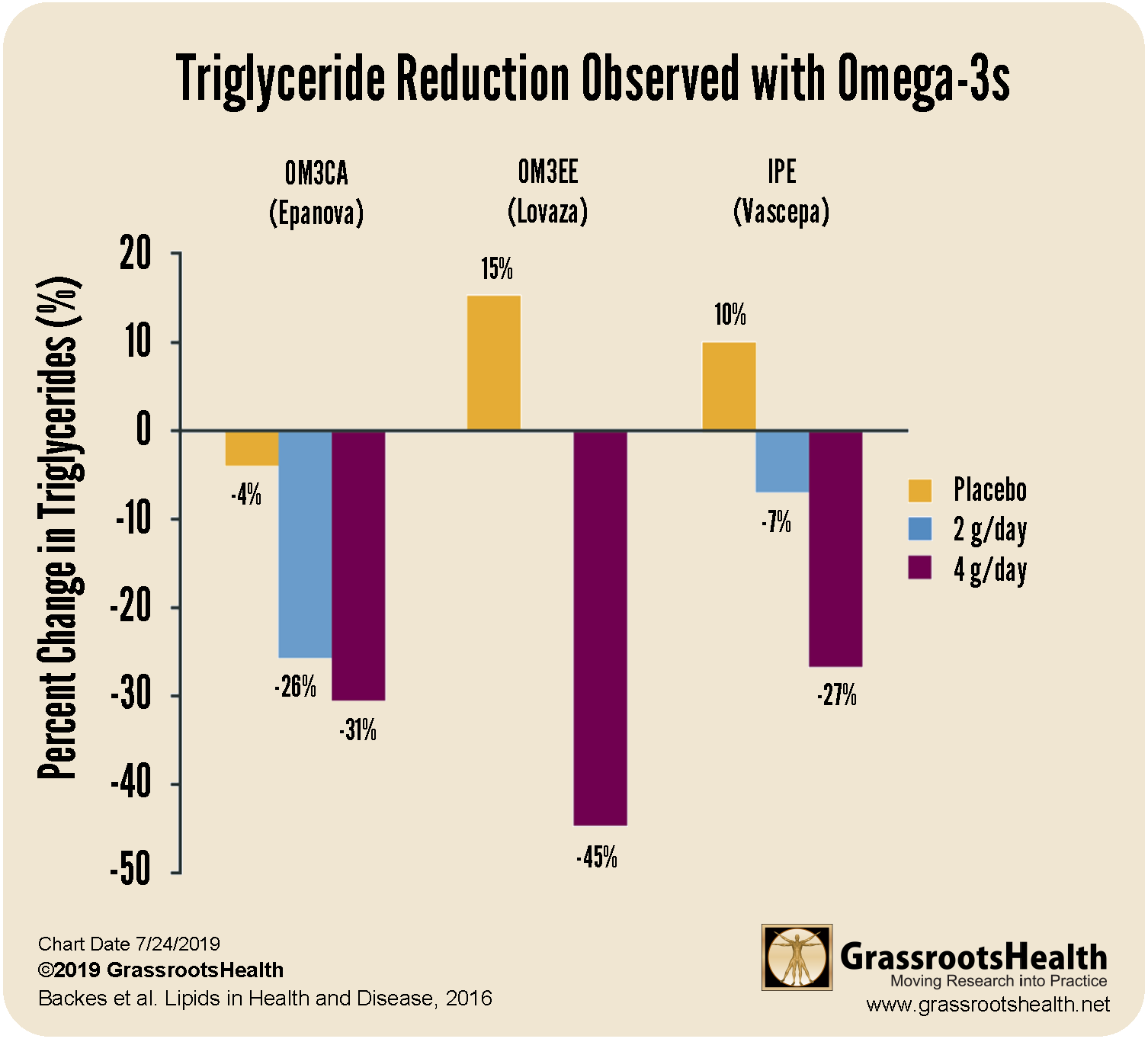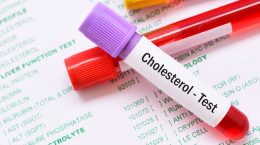Published on July 25, 2019
 Triglycerides are a type of fat found in your blood and measured as part of a cholesterol blood test. High triglycerides combined with high LDL or low HDL are often linked to a higher risk of heart disease. You can read more about triglycerides in this previous post.
Triglycerides are a type of fat found in your blood and measured as part of a cholesterol blood test. High triglycerides combined with high LDL or low HDL are often linked to a higher risk of heart disease. You can read more about triglycerides in this previous post.
Approximately 25% of the United States population has hypertriglyceridemia, defined as having a triglyceride level over 150 mg/dL. As with a high cholesterol ratio, hypertriglyceridemia is associated with an increased risk of cardiovascular disease, and very high triglycerides may also lead to pancreatitis.
What is the standard treatment for hypertriglyceridemia?
Traditional interventions for individuals with hypertriglyceridemia have relied heavily on the use of statins with diet and lifestyle changes. However, statins have undesirable side effects for some people. Several studies looking at the effect of omega-3 fatty acids on triglycerides have found beneficial results; a review of the evidence by Backes et al. looked at the efficacy and safety of prescription omega-3 fatty acids in the management of hypertriglyceridemia.
What have studies shown?
When comparing the effects of omega-3 fatty acids among patients with high triglyceride levels, doses of 4 grams per day of omega-3 fatty acid formulations were shown to significantly reduce triglyceride levels compared to placebo. The chart below illustrates the effects of three different prescription omega-3 fatty acid formulas, OM3EE (Lovaza), IPE (Vascepa), and OM3CA (Epanova), on triglyceride levels in patients with severe hypertriglyceridemia (500 mg/dL or higher).
The placebo used for each of these trials was olive oil in the OM3EE trial, vegetable oil in the IPE trial, and mineral oil in the OM3CA trial.
What are some other ways omega-3 fatty acids could benefit cardiovascular health?
The evidence for several ways that omega-3 fatty acids, specifically DHA and EPA, are thought to benefit triglyceride and cholesterol levels are reviewed in the paper.
- DHA has been shown to contribute to higher HDL levels (the “good” cholesterol).
- Omega-3s help decrease serum triglyceride levels, as in the trials referenced above, by blocking the synthesis of triglycerides in the liver.
- By inhibiting the inflammatory process, omega-3s could have a protective effect against several types of cardiovascular disease (CVD) in which inflammation is involved, including atherosclerosis and chronic heart disease.
- There are different types of LDL cholesterol particles with larger particles that are less likely than smaller ones to stick in the artery walls and contribute to the formation of plaque, thus increasing the risk of heart disease. Omega-3 fatty acids promote the formation of larger, safer LDL particles.
- Lastly, omega-3 fatty acids may benefit cardiovascular health by decreasing platelet aggregation and the formation of clots in the blood, and by lowering blood pressure (to be covered in an upcoming post).
Have questions you would like to see addressed?
Let us know! Send your news-worthy questions to jen @grassrootshealth.org and let us know what you think we should answer or share in our news.
Are you taking enough omega-3s to benefit cardiovascular health?
Find out your level of omega-3 fatty acids by testing your Omega-3 Index, along with your vitamin D. Testing these levels and taking daily steps to keep your Omega-3 Index at a target of at least 8%, and your vitamin D at a target level of 40-60 ng/ml (100-150 nmol/L), is important for all stages of health. Find out your levels today! Log on to the shop (click the link below) to get your tests and see for yourself if your levels can be improved.
Make sure you track your results before and after, about every 6 months!
How can I track my nutrient levels?
To help you track your nutrient levels, GrassrootsHealth has created an online tracking system called myData-myAnswers. This will help you better understand how your daily habits, diet, and supplementation are affecting your nutrient levels and impacting your health. Check it out today!







